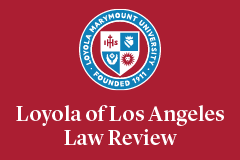Abstract
Passed in 2017 amid a historic housing shortage, California’s Senate Bill 35 offers a streamlined, ministerial approval process for affordable housing projects in jurisdictions that have missed agreed-upon targets for housing production. The law upends the prevailing—and arguably dysfunctional—model of development approval in California, which affords cities significant discretion and gives resident opponents powerful tools for delaying or defeating projects based on environmental and other concerns. To date, SB 35 has withstood legal challenges and created nearly twenty thousand new residential units. Yet the law is controversial, with some questioning its effectiveness and others decrying it as an unjustified intrusion on home rule. After recent amendments expanding SB 35’s reach to the coastal zone and with new laws borrowing its ministerial framework, the stage is set to test the state’s assumptions on a larger scale.
This Note analyzes the role of SB 35 and its sister statutes in alleviating California’s affordable housing crisis. While these laws have spurred housing production directly, their greatest value comes from their secondary effects on traditional housing actors. Even where developers decline to use them, the ministerial laws adjust the balance of power and reshape incentives in favor of affordable housing. Meanwhile, local agencies working in SB 35’s shadow are enacting long-overdue reforms that could generate even more development. By nurturing these efforts and addressing some outstanding questions, the state can leverage the ministerial laws to drive a local planning revolution that finally turns the tide in California’s housing crisis.
Recommended Citation
Colin Ryan,
Revolution by Proxy: Affordable Housing Law and Practice in California’s Ministerial Age,
58 Loy. L.A. L. Rev. 315
(2025).
Available at: https://digitalcommons.lmu.edu/llr/vol58/iss1/7


